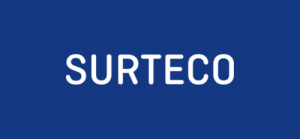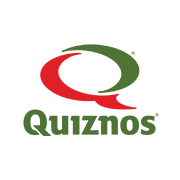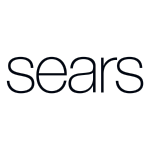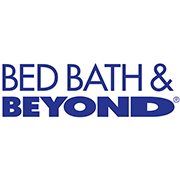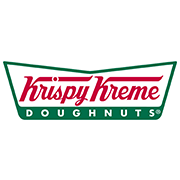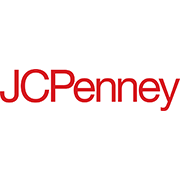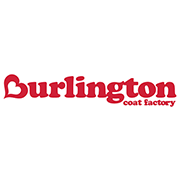Edgebanding Processing Information
1. What’s special about Doellken ABS Edgebanding
Doellken ABS Edgebanding is manufactured in an extrusion process and are through-colored. The even through-coloring of the material enables clean and simple rounding of edges. The impact resistant Doellken ABS material guarantees long service life of milling and other cutting tools. Doellken ABS Edgebanding is coated on the back with a universal primer, to enable perfect adhesion of the Edgebanding to the substrate, using any suitable hot melt glue or solvent-based Adhesive.
Doellken ABS Edgebanding have very low “free shrinkage” in the unglued condition already. The dimensional stability of ABS Edgebanding is another positive feature: The material starts softening only after 94 (± 2)°C (Vicat B 50).
2. Material characteristics ABS
ABS (acrylonitrile butadiene styrene) is an impact resistant, mechanically and thermally robust, high grade thermoplastic with a positive eco balance. For the last 20 years, this chlorine-free plastic has been successfully used in the furniture industry. The outstanding application, processing and disposal features of ABS contribute to its broad market penetration, in particular, in furniture production.
3. Doellken ABS Edgebanding applications
The range of applications for Doellken ABS Edgebanding is almost never-ending: from office via bathroom and kitchen, via exhibition stands and shop fitting, in the home and general interior furnishing. The Doellken ABS raw material formulation makes it particularly easy to work with and, over and above straight application, also offers simple application on all curved furniture shapes, irrespective whether inside or outside radii. With a view to their excellent disposal properties, ABS Edgebanding is often mandatory components in public and private tenders.
4. Processing by machine
Doellken ABS Edgebanding can be processed on all Edgebander machines (straight processing and machinery for curved profiles) using hot melt glue. Gluing, cross-cutting, milling, scraping and subsequent buffing with polishing wheels and hot-air dryers for high quality surfaces pose no problem. To ensure clean and durable Edgebanding application, certain salient processing parameters should be followed which may be dependent on the materials used (Edgebanding, glue, boards), the Edgebander machine and ambient temperatures. Trials to determine relevant optimal settings are therefore recommended. Manufacturers’ guidelines for an intended application should also be considered.
Adhesive
All conventional hot melt glues (EVA, PA, APAO, PUR) may be used on Doellken ABS Edgebanding. The low-shrink raw material formulation of Doellken ABS, together with highly heat-resistant Adhesive can guarantee reliable bonding even for Edgebanding thicker than 3 mm. Particularly heat-resistant Adhesive is recommended for applications exposed to high temperatures, e.g. near kitchen ovens or for furniture exported in containers. Ensure that the glue hopper on the Edgebander machine has sufficient glue to maintain a constant temperature during application. The glue application temperature will vary between 90°C and 220°C, depending on the type of Adhesive. Please note that thermostats in hot melt hoppers are often inaccurate and may deviate considerably from the actual temperature on application rollers. It is advisable to measure the temperature on the application roller. Doellken ABS Edgebanding cannot be glued using PVAC glue and the CA method.
Adhesive amounts to apply
Please follow the adhesive manufacturer’s instructions. Apply the Adhesive evenly and in sufficient quantities for beads of Adhesive to be pressed out along the edges of the freshly glued Edgebanding, ensuring that the spaces between board wood- chips will be filled. The amount of glue required depends on the density of the chipboard and the type of Adhesive.
Application temperature
For best results fitting Edgebanding, work with boards and Edgebanding at room temperature (not below 18°C). Material stored outdoors should be warmed up overnight. Hot melt glue will cure before the Edgebanding is in place if the temperature of the board or Edgebanding is too low. Draughts should for this reason also be avoided.
Wood moisture
The optimal moisture content of the boards should be between 7 and 10% for further processing.
Feed rate
The special Doellken ABS Edgebanding raw material formulation is designed to suit feed rates required in both low and high volume processing. Depending on the Edgebander gluing machine, speeds between 10 and 100 m/min. are possible. Speeds of up to 30 m/min. are also feasible on modern portal type machining centers, depending on the shape of the profile to be processed.
Press rollers
Bearing in mind the machine parameters, ensure that an adequate number of rollers are available and adjust the pressure to achieve the best possible appearance of the joint.
Extraction
Thermoplastic Edgebanding require higher extraction power than duroplastic Edgebanding. Doellken ABS Edgebanding has the advantage that electrostatic charging is lower, compared to other thermoplastic raw materials.
Milling
If possible, use cutters with 3 to 6 teeth, with ca. 70 mm diameter and at speeds between 12 000 and 18 000 rpm. Incorrect speeds or blunt cutters may damage the Edgebanding. In the event of smearing, reduce the speed of the cutter or cut against the feed (increase feed, if necessary).
Scraping
Since ABS colors tend to fade slightly after scraping, the plastic scrapings should be 0.1 to 0.2 mm thick at the most. To avoid chatter marks, the routers used for milling should be running true. Diamond coated cutters are recommended. Hot air blowers may be used for optimal scraping results where color shades are critical.
Buffing
Buffing wheels are ideal for buffing the radii of Doellken ABS Edgebanding. Any fading after scraping may simply be buffed away with these wheels, with the color of the radius then matching that of the Edgebanding itself. With through-feed Edgebander machines, remnants of the glue may also be removed with the buffing wheel. Glue remnants may also be removed using electronically controlled release agent spraying units as is common in industry. This improves the scraper blade finish as well.
5. Manual processing
Doellken ABS Edgebanding may also be applied manually, using a gluing jig or Edgebanding press, for instance. 2-component, acrylic based dispersion Adhesive or suitable contact Adhesive is recommended. For further information, please contact your Adhesive manufacturer directly. Single component wood PVAC glue is not suitable for gluing. Special lacquer adhesives, solvent glues or cartridge adhesives (PU) may be used for manual gluing. We will gladly provide you with a list of Adhesive on request. Gluing should be carried out at room temperature. To achieve optimal edgeband bonding when using contact Adhesive, ensure that the curing time after applying Adhesive to Edgebanding and board is adhered to. This is followed by tapping on the Edgebanding. Heating to speed up adhesion (e.g. heating rails) is superfluous when using dispersion glues. Processing may continue after curing (up to ca. 6 hours, depending on Adhesive).
6. Mechanical characteristics
Resistance to abrasion
The surface of printed Doellken ABS Edgebanding is sealed using UV-hardened acrylic varnish for a scratch-resistant finish. The printed patterns also have excellent resistance to scratching and abrasion. They are compliant with Stress Group 2E, DIN 68861 1-8.
Ball indentation/shore hardness D
According to DIN EN ISO 2039-1 or DIN EN ISO 868, Doellken ABS results are excellent, also in terms of surface hardness.
Resistance to warp under heat
With a value of 94 (± 2)°C as per Vicat B 50, Doellken ABS Edgebanding is ideally suited for use in the furniture industry and for interior furnishing.
Varnishing
Plain colored Doellken ABS Edgebanding may be varnished with a color of your choice without a problem and without requiring prior treatment. Use PUR or acrylic-based varnishes. Do not use nitro-cellulose varnishes. Contact your coatings manufacturer for the most suitable type of varnish.
7. Lightfastness
The Doellken Technical Department uses a special method for regular tests on Doellken ABS Edgebanding for lightfastness. With a permanence of 6 – 7 on the wool color scale, they are ideal for interior use (DIN EN 15187).
8. Cleaning
Special plastic cleaning agents are recommended for Doellken ABS Edgebanding. Do not use substances with substantial solvent or alcohol content.
9. Disposal
Doellken ABS Edgebanding waste may be incinerated together with wood chips in relevantly authorized plant. No chlorine compounds are generated. The stringent TA-Luft [Technical Guidelines on Air Quality] limits are complied with. Your chipboard manufacturer can also dispose of waste chipboard with ABS Edgebanding without a problem. There is no need for time-consuming sorting of waste or separation of Edgebanding from boards.
10. Quality/Tolerances
The consistently high quality of Doellken ABS Edgebanding is ensured through comprehensive quality assurance measures such as our Technical Department’s ongoing improvement of raw material characteristics. Manufacturing tolerances for Edgebanding are narrow and are checked for each manufacturing run.
Edgebanding Finder
Looking for the perfect Edgebanding?
Make sure you use the Edgebanding Finder. You can specify size, type, material, board manufacturer, embossing and gloss level to find that perfectly matched Edgebanding!
Downloads
Download Safety Data Sheets PDF’s
Download Processing Information PDF’s
